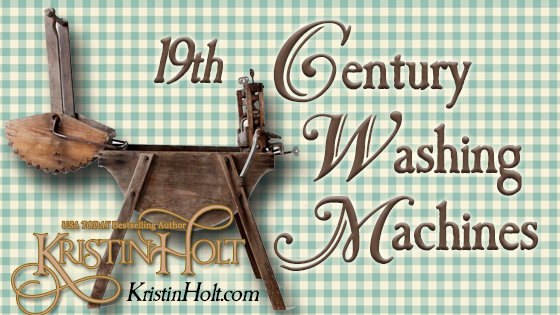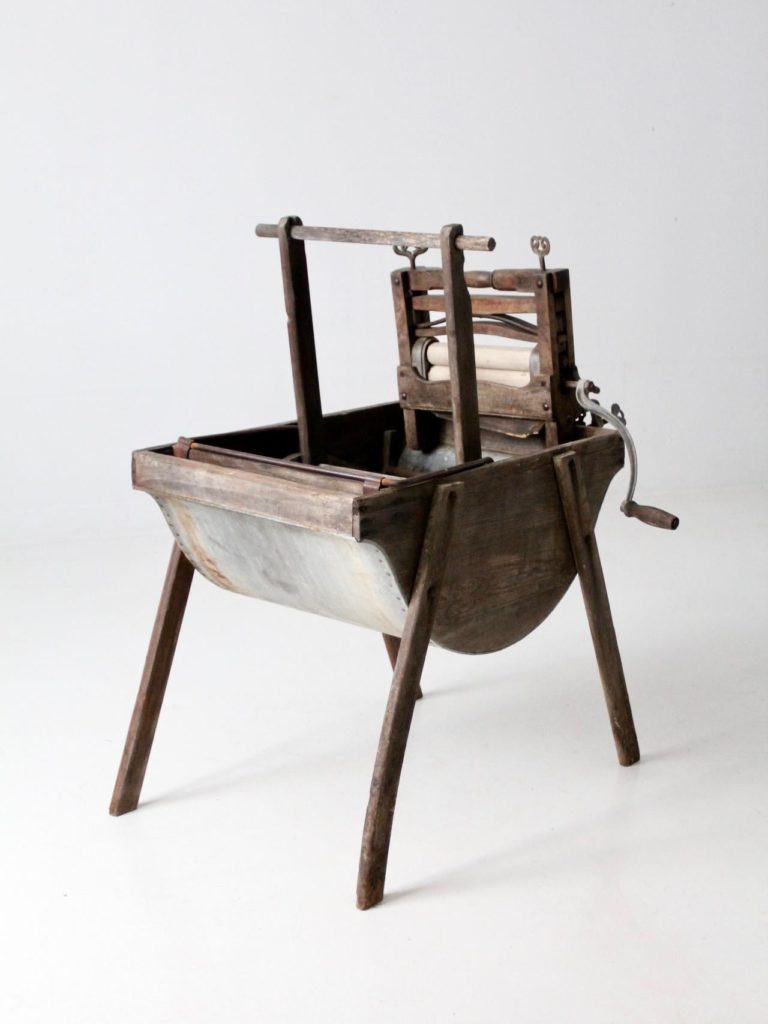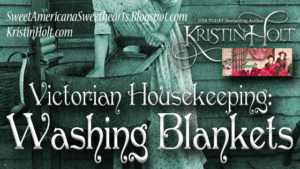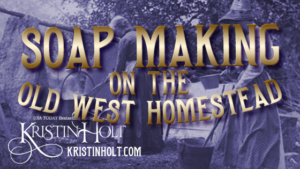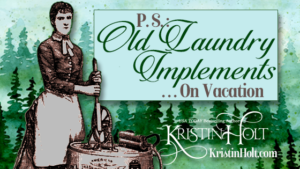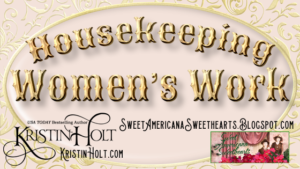19th Century Washing Machines
19th Century Washing Machines
.
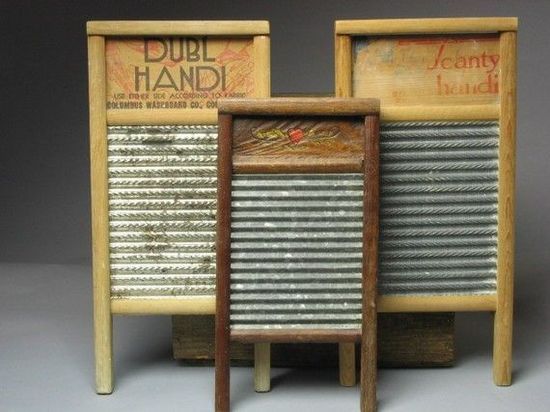
Three antique wash boards. Image: Pinterest.
.
Washing clothes by hand involves lugging many buckets of water from stream, well, or barrel positioned to catch rain water, heating the water, adding soap to one tub and fresh rinse water to another tub. The long, arduous, time-consuming outdoor job of scrubbing soapy clothes over a washboard was gradually replaced by innovative hand-operated machinery that saved homemakers hours of backbreaking labor.
.
And to think the washboard was a new invention in 1797!
.
.
Catharine Beecher, an early advocate of bringing order and dignity to housework, called laundry “the American housekeeper’s hardest problem”. Women from all classes tried to find ways to get relief from doing laundry. Some hired washerwomen and others used commercial laundries. Eventually mechanical aids lightened the load. [source]
.
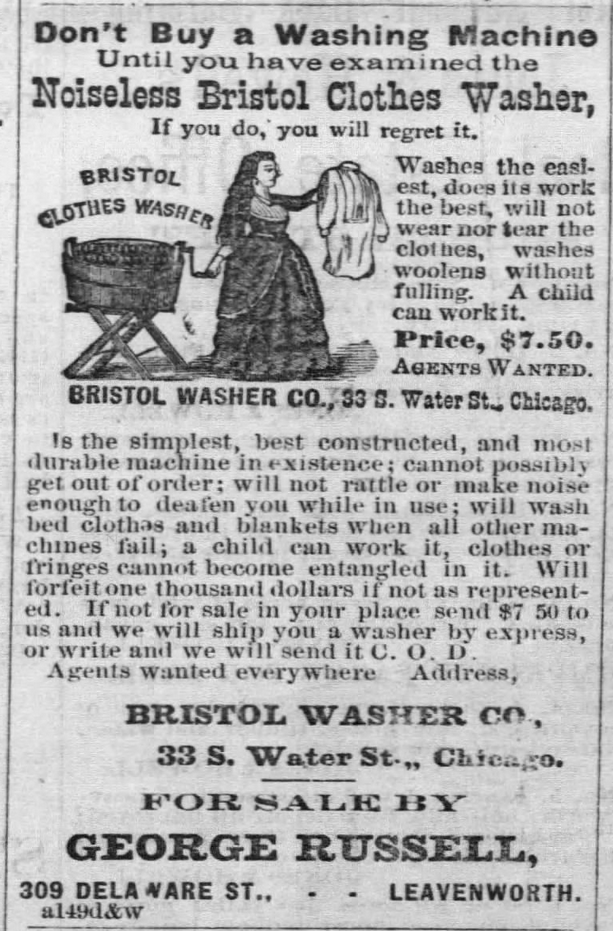
Advertisement for Noiseless Bristol Clothes Washer (company in Chicago), from The Leavenworth Daily Commercial of Leavenworth, Kansas. Dated May 16, 1874.
.
Once clothing was washed, excess water was typically removed by wringing, but the fabric still retained a great deal of rinse water. Not long after rotary machines were first invented, a roller was affixed atop the barrel for use in “mangling“, or pressing excess water out by manually cranking between the spring-tension wooden rolling pins. Each laundry item would be fed through the wringer separately. The wringer would be swung over the wash tub so that extracted wash water would fall back into the tub to be reused for the next load.
.
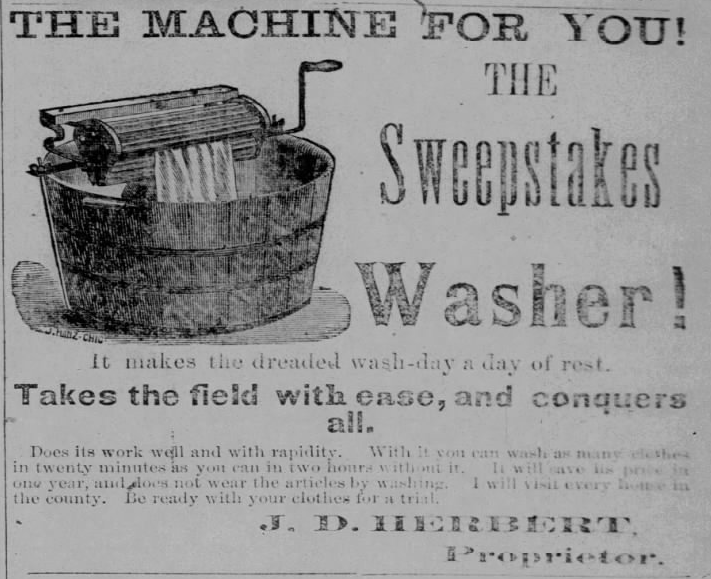
From The Falls City Journal of Falls City, Nebraska on October 11, 1879: “The Machine For You! The Sweepstakes Washer! It makes the dreaded wash-day a day of rest.”
.
American James King patented the first hand-powered washing machine to use a drum in 1851, the drum made King’s machine resemble a modern machine. The rotary washing machine was patented by Hamilton Smith in 1858.
.
1 of 2). L. Smith’s Complete Washer! Manufactured and sold by G. W. Barber: “Relief for the weary! Time, Labor & Money Saved! Patented June 25, 1867.” The Summit County Beacon of Akron, Ohio on June 11, 1868.
2 of 2). L. Smith’s Complete Washer! Manufactured and sold by G. W. Barber: “Relief for the weary! Time, Labor & Money Saved! Patented June 25, 1867.” The Summit County Beacon of Akron, Ohio on June 11, 1868.
.
The newly invented washing machines didn’t become generally available until the 1880s. Many women forewent the machine until the 20th century because it had a tendency to tear clothes or leave rust marks. And the washing machine was only the beginning: the clothes had to be soaked, rinsed several times, boiled, starched, blued or bleached, wrung, then hung up to dry and ironed. See Granny’s Receipt for Laundry.
.

Doty Washing Machine for sale in Atchison, Kansas. From Atchison Daily Patriot on June 7, 1870.
.
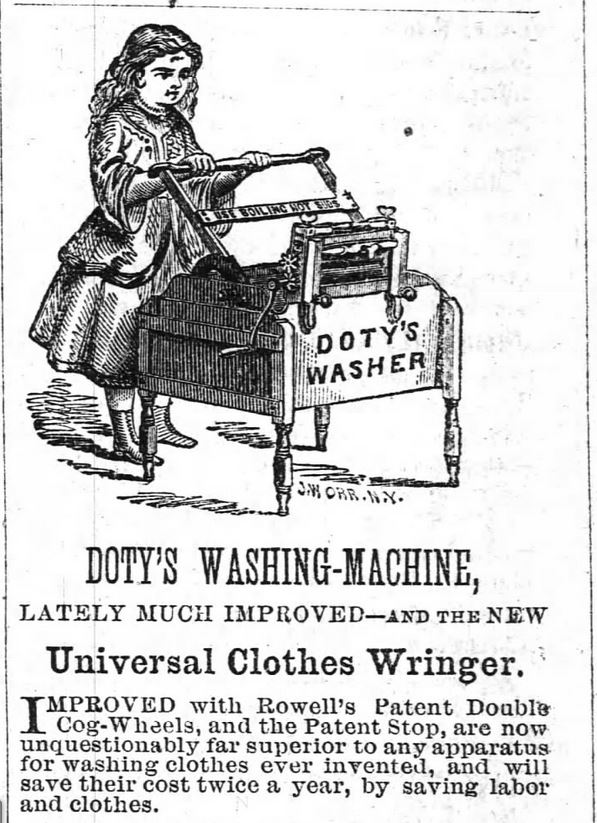
1 of 3). Illustrated Ad for Doty’s Washing-Machine, Lately Much Improved–and the New Universal Clothes Wringer. From The Weekly Star of Wilmington, North Carolina on August 5, 1870.
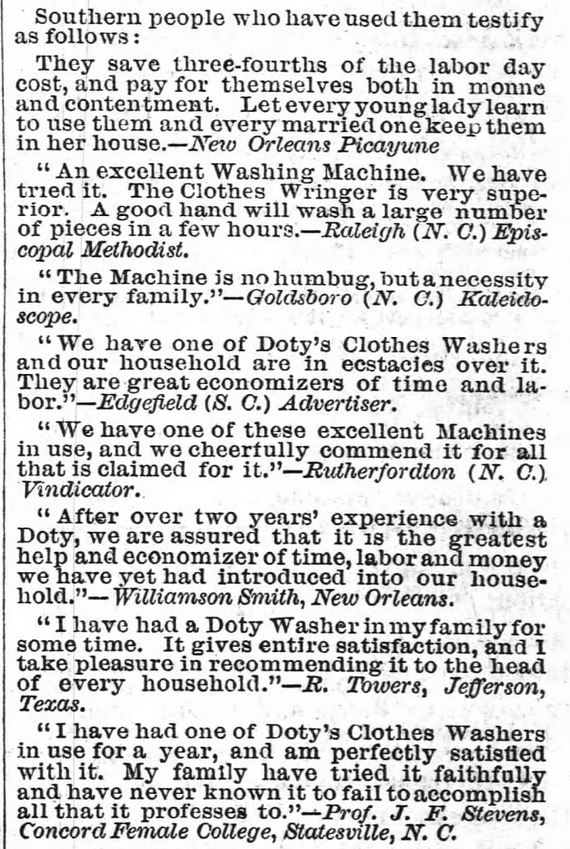
2 of 3). Illustrated Ad for Doty’s Washing-Machine, Lately Much Improved–and the New Universal Clothes Wringer. From The Weekly Star of Wilmington, North Carolina on August 5, 1870.
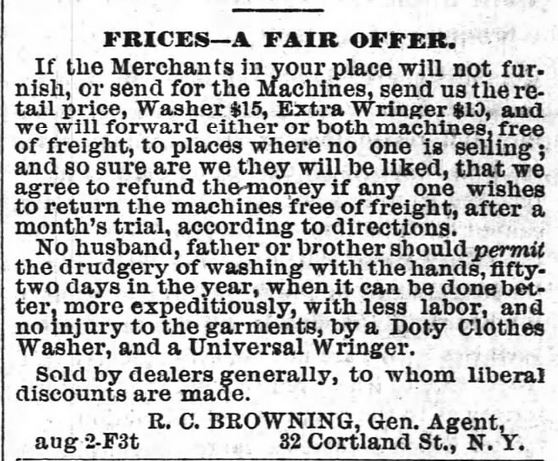
3 of 3). Illustrated Ad for Doty’s Washing-Machine, Lately Much Improved–and the New Universal Clothes Wringer. From The Weekly Star of Wilmington, North Carolina on August 5, 1870.
.
“Washing,” Mrs. Julia McNair Wright wrote in her 1879 book The Complete Home: An Encyclopedia of Domestic Life & Affairs, “…is a great burden, and often a family bugbear.” “In fact, her book suggests, by strongly advising women to wash each week, that the laundry was such a burden clothes were often left dirty for weeks at a time.“
.
Washing machines must’ve been a scarcity and luxury in the Old West, as they’re bulky, heavy, and take up precious transportation room in a covered wagon or freight wagon. By the time the Transcontinental Railroad joined the East and West coasts of the United States in 1869, they must’ve been more available to consumers.
.
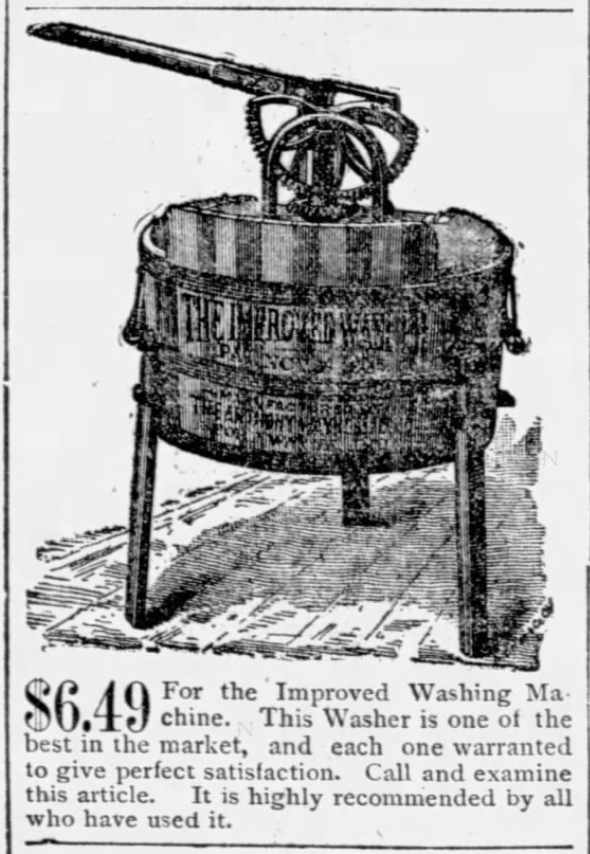
Illustrated Ad for the Improved Washing Machine, $6.49. From the Chicago Tribune on April 19, 1887.
.
$6.49 in 1887 is the same as $202.47 in 2021. ~ Inflation Calculator
.
.
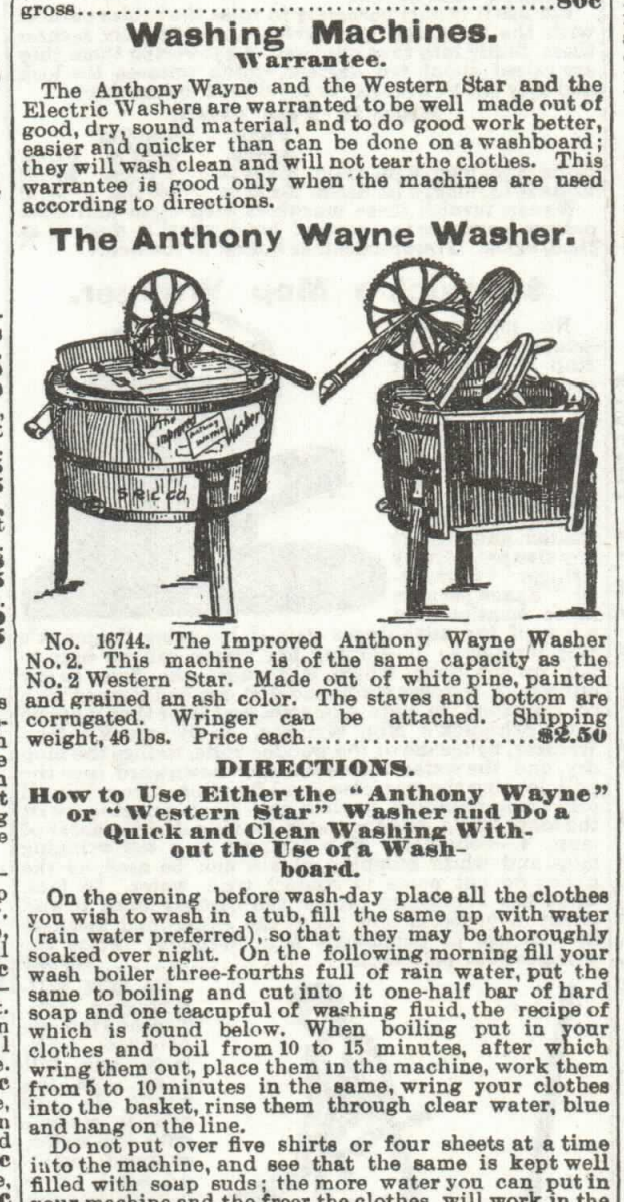
1 of 5). For Sale in the Sears Roebuck and Co. Catalogue, 1897: The Anthony Wayne Washer and Western Star Washer.
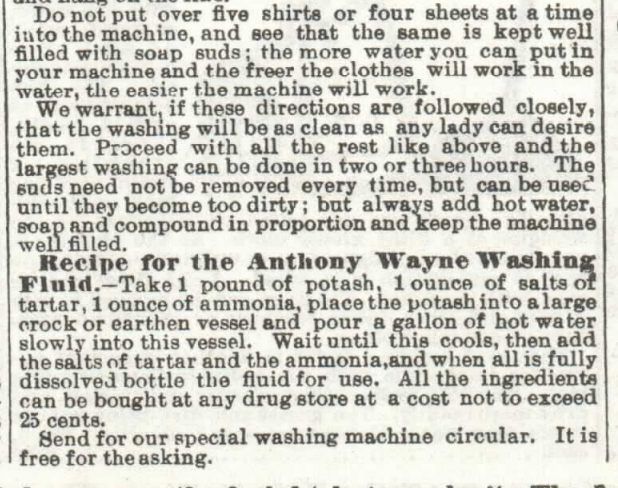
2 of 5). For Sale in the Sears Roebuck and Co. Catalogue, 1897: Recipe for the Anthony Wayne Washing Fluid.
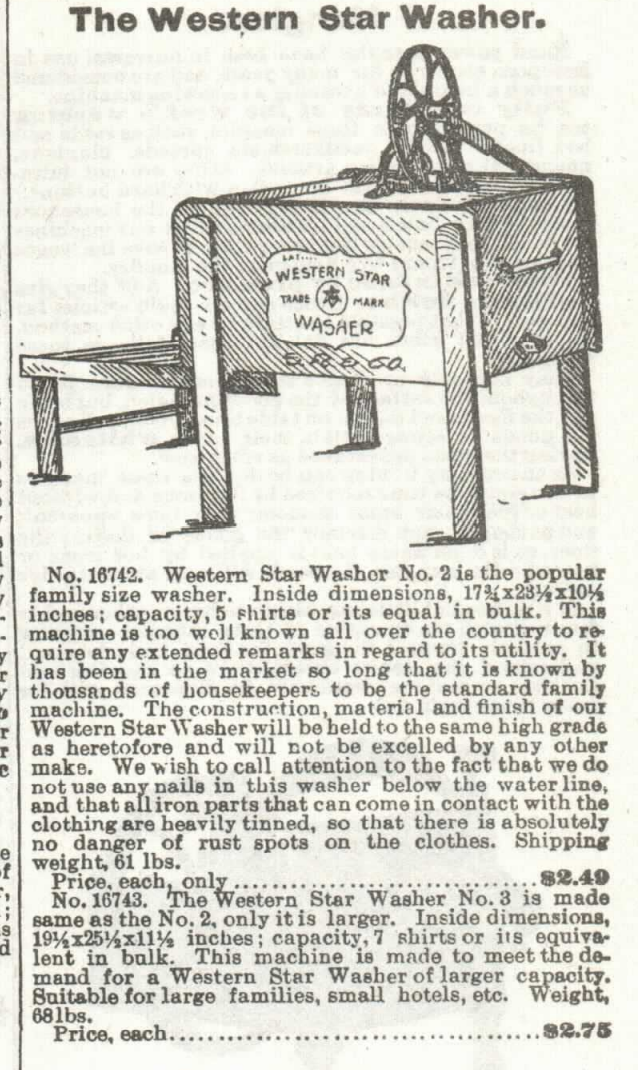
3 of 5). For sale in the Sears Roebuck and Co. Catalogue, 1897: The Western Star Washer.
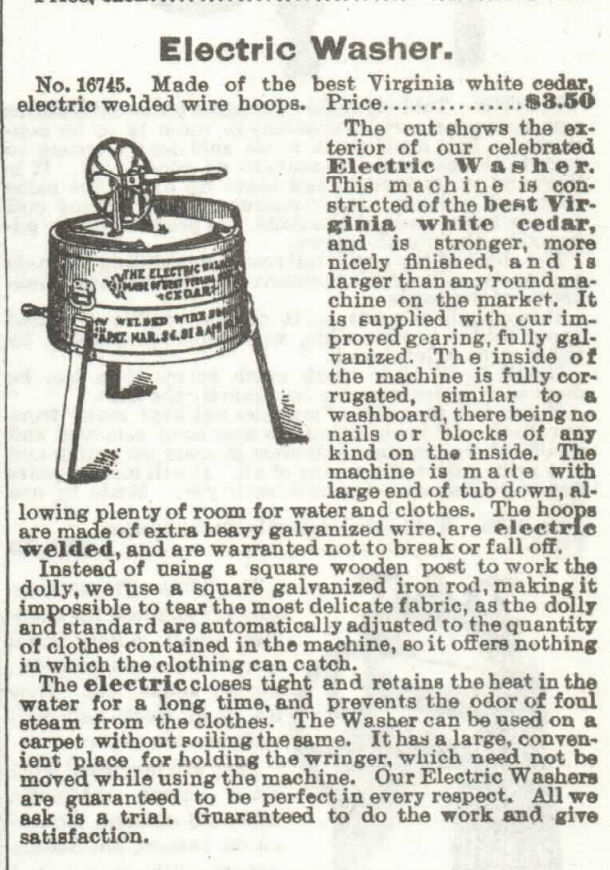
4 of 5). For sale in the Sears Roebuck and Co. Catalogue, 1897: The Electric Washer.
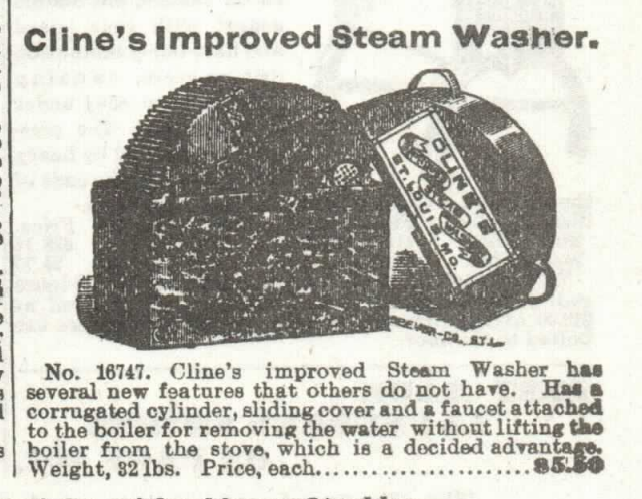
5 of 5). For sale in the Sears Roebuck and Co. Catalogue, 1897: Cline’s Improved Steam Washer.
.
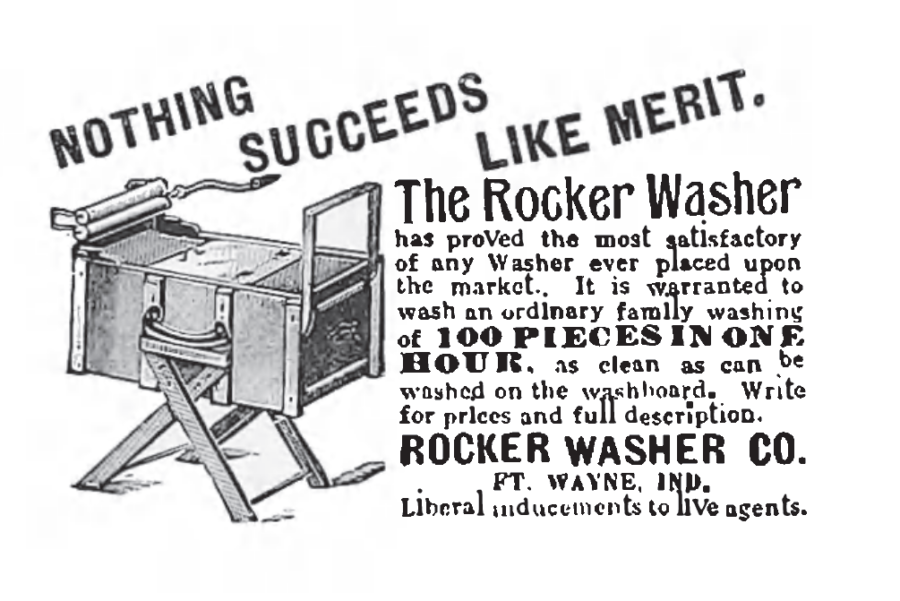
Illustrated advertisement for Merit Rocker Washer out of Fort Wayne, Indiana. From Fort Wayne Illustrated, 1897.
.
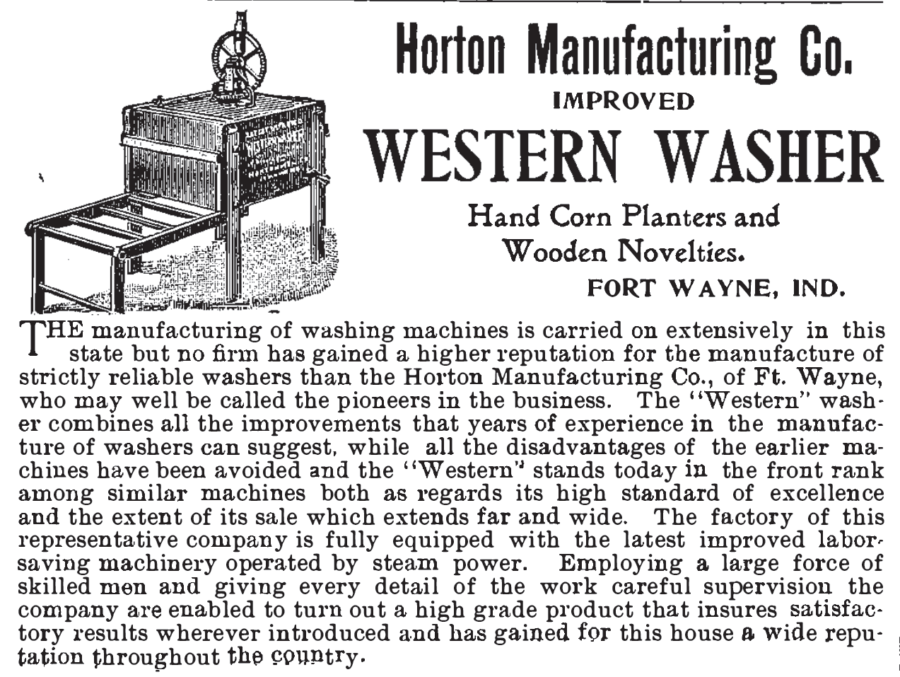
Advertisement, Illustrated, for Horton Manufacturing Co. Improved Western Washer, of Fort Wayne, Indiana. Ad published in Fort Wayne Illustrated, 1897.
.
Is it any wonder well-to-d0 households hired housekeepers, sent clothing to a laundry, and essentially passed off this difficult task to others?
.
Related Articles
.
Updated August 2022
Copyright © 2015 Kristin Holt LC
19th Century Washing Machines

